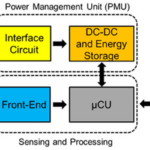 Innovation Labs has announced the BaMoS battery monitoring system that uses ultra-thin printed pressure and temperature sensors to capture detailed battery data down to the individual cell level, which can be used to extend battery lifetime by up to 40 percent.
Innovation Labs has announced the BaMoS battery monitoring system that uses ultra-thin printed pressure and temperature sensors to capture detailed battery data down to the individual cell level, which can be used to extend battery lifetime by up to 40 percent.
The battery is the most important component in an electric vehicle (EV). Despite extensive research, not much is known about how a battery system reacts to stress tests in terms of temperature and pressure, or exactly what happens during the charging cycle. This is because data from inside a battery system is usually not easily accessible.
With BaMoS, InnovationLab now provides a system that captures detailed, cell-level pressure and temperature data, obtained from ultra-thin printed sensor foils which can be placed between individual battery cells. As battery cells expand and contract during the charge-discharge cycle, a pressure-sensitive foil can monitor this ‘breathing’, to measure the state of charge, detect any irregular behavior, and prevent overcharging.
This cell-level information delivers valuable insights into state of health and performance, helping R&D teams to improve their battery designs and battery monitoring solutions – including extending range for electric vehicles. The data is spatially and temporally resolved to provide an accurate picture of battery behavior.
“Measurement is the first step, that leads to improved control and battery performance,” said Luat Nguyen, Managing Director at InnovationLab. “Our flexible, ultra-thin printed sensors provide the detailed, accurate data that is necessary to improve the performance and lifetime of batteries for electric vehicles.”
InnovationLab offers a complete battery monitoring solution, including the sensor foils, electronics to gather and process the captured data, and software for live visualization, storage and analysis of the data. Both the pressure and temperature sensors can be customized in terms of size, resolution and substrate material to meet the particular needs of a customer.





